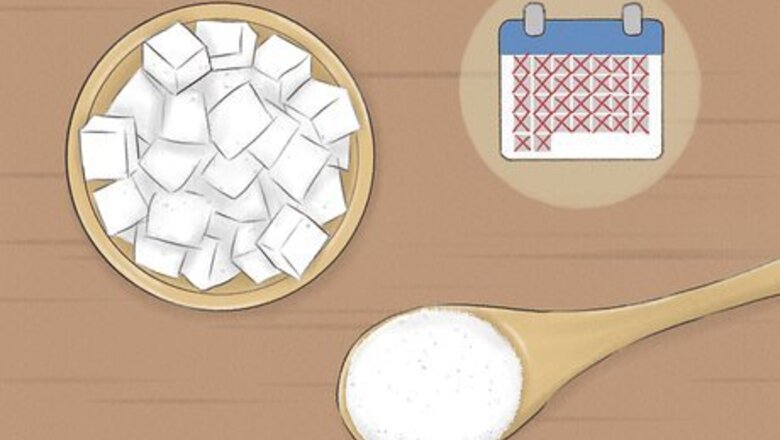
views
X
Trustworthy Source
Harvard Medical School
Harvard Medical School's Educational Site for the Public
Go to source
If you’re hoping to wean yourself off added sugars, a month-long detox could be a great step in the right direction. While there isn’t a universal, no-sugar detox plan out there, we’ve put together some rough guidelines to help you get started.
Cut out added sugar for 30 days.
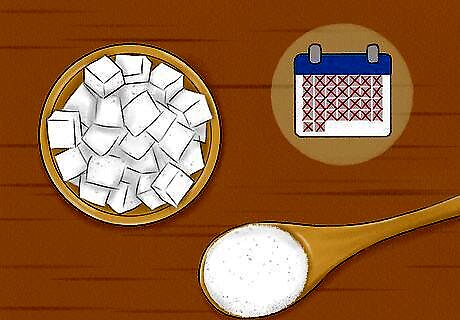
Natural sugars are fine, but all added sugars are off-limits. Set a firm start and stop date for your no-sugar challenge, so you can plan your meals and snacks in advance. You might give up sugar for a specific month, or pick a random start and end date that best fit your schedule. The choice is yours! If you aren’t quite ready for a month-long detox, try quitting sugar for 2 weeks instead. Instead of cutting out added sugar entirely, you might limit yourself to a small amount each day, like 5 g. You might try quitting sugar for 10 days, and see how it goes. If it goes well, you might extend your detox for a couple more weeks. If you’d like to test the waters first, the New York Times has a simple, weeklong sugar challenge you can try. Check it out here: https://www.nytimes.com/programs/sugar-challenge.
Inspect food labels for added sugars.

The no-sugar challenge is all about eating less added sugar. Believe it or not, sugar is added into lots of different snack foods, like crackers, tomato sauce, and frozen pizza. Before grabbing a meal or snack, check the nutrition facts to make sure your food has very little to no added sugar. Many dieters cut out added sugar altogether during their no-sugar challenge. If you’re not quite ready to take the plunge, you could limit yourself to a small amount of added sugar each day, like 5 g.
Stay away from artificial and natural sweeteners.
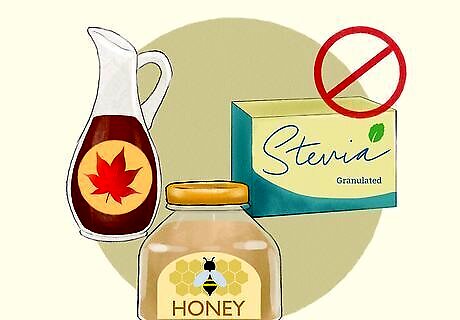
A sugar detox is about cutting added sugars, not cutting calories. Plenty of drinks and other desserts are made with sugar-free or natural sweeteners. For the next 30 days, do your best to avoid both artificial and natural sweeteners, like aspartame, sucralose, saccharin, stevia, honey, maple syrup, corn syrup, or agave. Avoiding other forms of sweeteners will help reduce your sugar cravings. Double-check the ingredient list on your drinks, snacks, and other foods to make sure there are no added sweeteners. Even though artificial sweeteners are sugar-free, they actually taste much sweeter than traditional sugar. Because of this, it’s best to cut them out of your diet during a sugar detox.
Toss out any sweets and junk food.
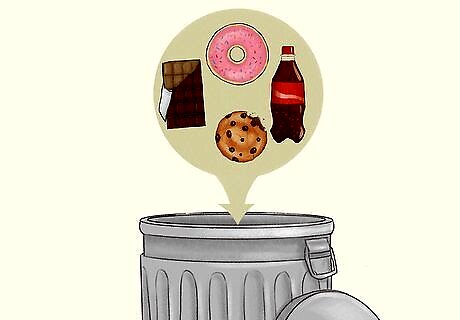
Don’t torture yourself with foods you can’t eat. Instead, toss out or donate any cookies, candy, and other sugary snacks taking up space in your pantry. Then, stock up on fruit, so you can still satisfy your sugar cravings. You could also transfer your snacks and sweets to a plastic bin or container. Then, keep the container out of sight for the next month.
Set aside any sweetened dips and sauces.
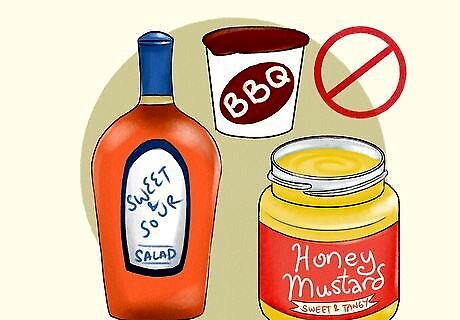
Lots of sauces and dressings are made with added sugar. Check the labels on any sauces, salad dressings, and other dips you have at home. Some popular options, like barbecue and pasta sauce, have extra sugar added in. To be safe, get rid of any sugary sauces and replace them with sugar-free alternatives, instead. For reference, Maille dijon mustard, Gulden’s spicy brown mustard, Prego’s marinara sauce, French’s yellow mustard, and Newman’s Own Classic oil and vinegar salad dressing are all sugar-free.
Replace soda with healthier alternatives.
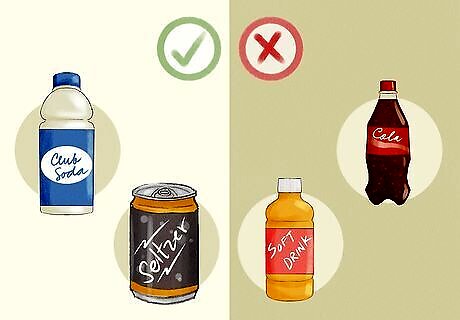
Seltzer water and club soda are much healthier than traditional soda. According to health experts, on a regular diet, adults should limit themselves to 50 g of added sugar per day. Unfortunately, a single bottle of soda can have at least 52 g of sugar, which already puts you over the daily recommended limit. During your no-sugar challenge, toss out your soda and stock up on seltzer or sparkling water instead. While diet sodas have fewer calories than traditional soft drinks, they’re still riddled with artificial sweeteners. Kick them to the curb during your no-sugar challenge, too.
Enjoy a healthy, filling breakfast.
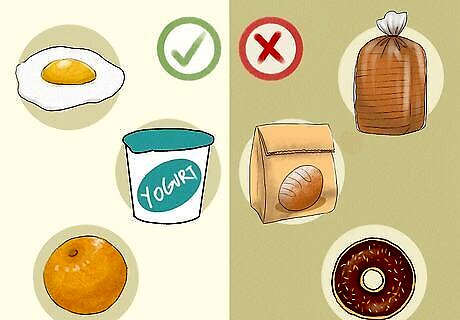
A lot of popular breakfast foods are riddled with added sugar. Instead, try to whip up a hearty, nutritious breakfast without any extra sugar, like sweetened cereal. Plain, unsweetened yogurt with cinnamon, fruit, cooked veggies, or scrambled eggs are all great options. A lot of breads have extra sugar added. To be safe, stock up on pita bread instead.
Grab natural snacks instead of processed ones.
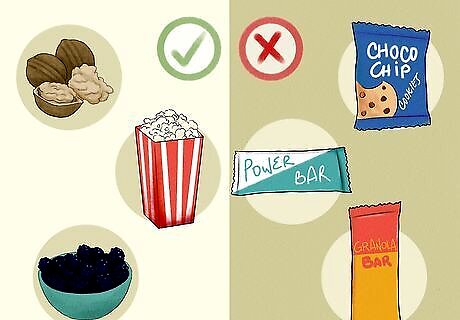
Processed snacks are full of added sugar. Instead of snacking on a granola or power bar, opt for a handful of mixed nuts, instead. A bowl of popcorn or a piece of fresh fruit are also great snack options. Canned fruit is okay if it’s not packaged in syrup.
Switch out traditional desserts with fruit.
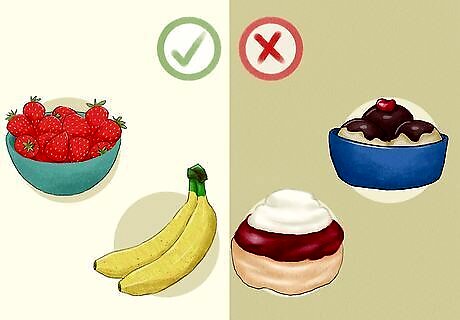
Fruits have lots of natural sugar, but no added sugar. Instead of grabbing a slice of cake or a bowl of ice cream as your after-dinner treat, whip up a bowl of fresh fruit. Many fruits are chock-full of extra nutrients, like fiber and vitamins; best of all, they don’t have any added sugars. You might chow down on a bowl of sliced strawberries, or savor a slice of fresh watermelon.
Eat plenty of protein-rich foods.
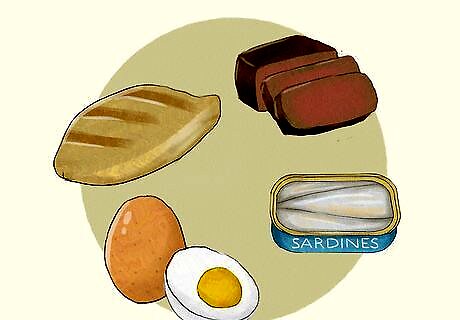
Protein is essential to a healthy diet, even a sugar-free one. Protein helps keep your immune system up to snuff, and is an important source of energy for your body. Load up on chicken, fish, and grass-fed meats, along with nuts, eggs, and seeds. For example, you might enjoy some fried eggs for breakfast, or a grilled chicken breast for lunch.
Stock up on healthy fats.

Healthy fats keep you physically and mentally sharp. They’re a great source of energy, plus they help with weight management, fatigue, and mood management. Seeds and nuts are an excellent source of healthy fats, along with avocado and fish. Eating plenty of healthy fats can lower your risk for both cardiovascular disease and diabetes.
Snack on lots of fruit.
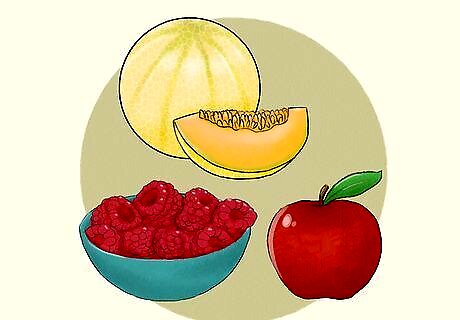
Fruit is rich in natural sugar, and the perfect way to satisfy your sweet tooth. Giving up added sugars doesn’t mean you can’t enjoy naturally sweet foods. Throughout the day, reach for a piece of your favorite fresh fruit. Canned fruit is another viable option, as long as it’s packaged in water or juice, not syrup. Dried fruit could be a tasty alternative, too. Just check the label to make sure there’s no added sugar.
Chow down on fresh and frozen veggies.
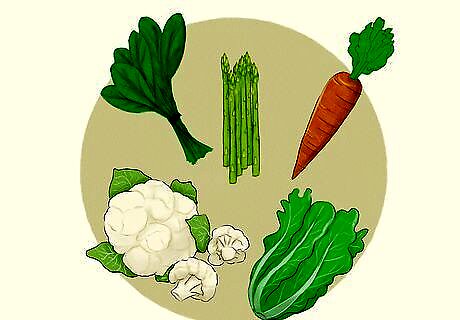
Vegetables are a great source of vitamins, minerals, and other nutrients. Some veggies are naturally sweet, but they’re still okay to eat on a no-sugar diet. Quitting sugar for 30 days is about getting rid of added sugars, not natural ones. You might enjoy a salad with your dinner, or you could munch on some carrot sticks as a healthy snack.
Cut back on sugar in your recipes.
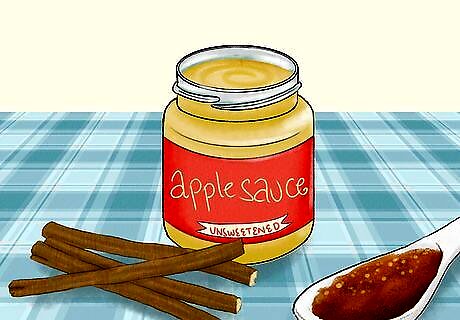
Jazz up your baked goods with unsweetened substitutes. Instead of scooping some white, granulated sugar into your recipe, use unsweetened applesauce instead. You can also liven up your recipes with extra spices, like allspice, cinnamon, nutmeg, and ginger, or extracts, like vanilla, almond, lemon, or orange. Replace sugar with applesauce at a 1:1 ratio. For instance, if your recipe called for 1 cup (201 g) of sugar, you’d add in 1 c (240 mL) of unsweetened applesauce.
Stay relaxed and well-rested.

You might crave more sugar when you’re feeling stressed and tired. When you’re under a lot of stress and pressure, your body produces extra cortisol, which is a stress hormone. Because of this, you might feel hungrier, and crave more sugary snacks. You might also get extra cravings and hunger pangs when you get less than 8 hours of sleep. With this in mind, try to relax and get plenty of sleep throughout your no-sugar challenge. Cortisol can be reduced through a variety of ways, such as exercise, mindfulness practices, deep breathing, laughter, or spending time with a pet. If you’re having trouble calming down, try unwinding in a warm bath, listening to relaxing music, journaling, or doing mindful meditation.
Don’t eat lots of sugar after the challenge ends.
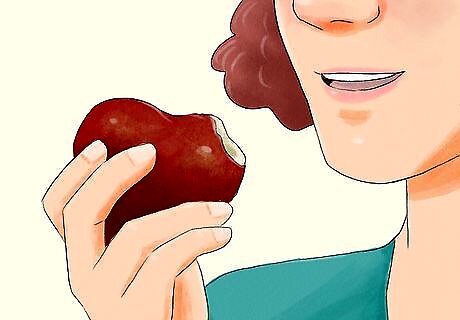
The no-sugar challenge is all about building healthy, long-term habits. This isn’t to say you have to give up your favorite sweets forever. Instead, focus on cutting back your sugar intake instead of eliminating it altogether. Take a look at some sugary foods or ingredients you enjoyed before your sugar detox. Try halving your usual portions, or enjoying a little less than you normally would. For instance, you might add 1 spoonful of sugar to your tea or coffee instead of adding 2. You might bake a batch of brownies, but cut them into smaller pieces. You could enjoy a bowl of ice cream once or twice a week instead of eating some every night.

















Comments
0 comment